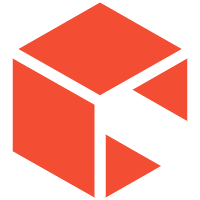No-Down Payment Mortgages Explained: Eligibility and Options for Homebuyers
Oct 26, 2024 By Pamela Andrew
For many aspiring homeowners, the dream of owning a home can feel out of reach, especially with rising property prices. The traditional route often requires a substantial down payment, typically around 20% of the home's purchase price. However, no-down payment mortgages present an attractive alternative, allowing individuals to purchase homes without the need for a hefty upfront investment.
But are you eligible for one of these loans? This guide will explain the ins and outs of no-down payment mortgages, helping you understand your options and the eligibility criteria that can turn your homeownership dreams into reality.
Understanding No-Down Payment Mortgages
No-down payment mortgages are designed to make homeownership accessible for those who may not have significant savings. Instead of putting down a large chunk of the home's price, borrowers can finance the entire purchase. This type of loan can significantly ease the financial burden for first-time homebuyers, veterans, and low-to-moderate-income borrowers. These loans are often backed by government programs, which mitigate the risk for lenders and enable them to offer such favorable terms.
Types of No-Down Payment Mortgages
Here are some common types of no-down-payment mortgages:
VA Loans
VA loans are a valuable option for veterans, active-duty service members, and eligible members of the National Guard and Reserves. Backed by the U.S. Department of Veterans Affairs, these loans allow borrowers to purchase homes with no down payment. VA loans also come with competitive interest rates and dont require private mortgage insurance (PMI), offering significant savings. To qualify, applicants must meet service requirements and obtain a Certificate of Eligibility (COE) confirming their eligibility for VA benefits.
USDA Loans

USDA loans are designed to help low-to-moderate-income buyers purchase homes in rural and suburban areas. These loans require no down payment and offer low interest rates and reduced mortgage insurance costs, making homeownership more affordable. To qualify, applicants must meet income requirements, generally not exceeding 115% of the area's median income. Additionally, the home must be located in a USDA-eligible rural area, as determined by the U.S. Department of Agriculture's guidelines.
FHA Loans
While Federal Housing Administration (FHA) loans typically require a down payment, they are worth mentioning due to their lower down payment options. Borrowers can secure an FHA loan with a down payment as low as 3.5%, making it a viable option for those who can manage a small upfront cost. However, it is essential to note that FHA loans do require mortgage insurance, which can add to the overall monthly payment.
Am I Eligible for a No-Down Payment Mortgage?
Eligibility for no-down payment mortgages varies based on the type of loan you are pursuing. Heres a breakdown of the criteria for the most common options.
Eligibility Criteria for VA Loans
To qualify for a VA loan, you must meet the following requirements:
Military Service: You need to have served in active duty, the National Guard, or the Reserves for a specified period, which can vary based on when you served.
Certificate of Eligibility (COE): You must obtain a COE from the VA, which demonstrates your eligibility for the loan.
Creditworthiness: While the VA does not set a minimum credit score, most lenders prefer a score of at least 620.
Debt-to-Income Ratio: Lenders typically look for a debt-to-income ratio of 41% or lower, although exceptions may exist.
Eligibility Criteria for USDA Loans
For a USDA loan, youll need to meet the following criteria:
Income Limits: Your household income must be at or below 115% of the median income for your area.
Property Location: The home you wish to purchase must be in a rural area defined by the USDA.
Credit Score: While theres no official minimum score, a score of 640 or higher is typically preferred.
Citizenship: You must be a U.S. citizen, a non-citizen national, or a qualified alien.
General Eligibility for No-Down Payment Mortgages
Regardless of the specific type of loan, there are some general eligibility requirements that potential borrowers should keep in mind:
Credit Score: A good credit score is crucial for securing any type of mortgage. While specific requirements may vary, aiming for a score of 620 or higher is advisable.
Stable Income: Lenders will look for proof of stable employment and consistent income, typically for at least two years.
Debt-to-Income Ratio: A low debt-to-income ratio (DTI) is essential. Generally, lenders prefer a DTI of 43% or lower.
Loan Purpose: Most no-down-payment loans are intended for primary residences. If you plan to buy a vacation home or rental property, you may not qualify.
Benefits and Drawbacks of No-Down Payment Mortgages
However, they also come with specific benefits and drawbacks. Heres a breakdown:
Benefits of No-Down Payment Mortgages

No-down payment mortgages allow buyers to purchase homes without needing large upfront savings, making homeownership more accessible, especially for first-time buyers. These loans can also have competitive interest rates, and some, like VA loans, eliminate the need for private mortgage insurance (PMI), reducing monthly costs. Additionally, they enable faster homeownership, helping borrowers capitalize on low housing inventory and rising property values without waiting to save a large down payment.
Drawbacks of No-Down Payment Mortgages
One major drawback is the larger loan amount, which results in higher monthly payments and increased interest costs over time. Additionally, without initial equity, borrowers are more vulnerable if property values drop, potentially making it difficult to refinance or sell. Some no-down-payment loans may come with higher interest rates, and borrowers may need strong credit and income to qualify for favorable terms.
Conclusion
Navigating no-down payment mortgages can be challenging, but its a crucial step toward homeownership for many. Understanding the eligibility for loans like VA and USDA helps determine the best path forward. Assessing your financial situation and conducting thorough research ensures informed decisions aligned with your goals.
Whether you're a veteran, a first-time buyer, or seeking a new home, no-down payment mortgages provide a unique chance to enter the market. With the right preparation, homeownership is possible without a substantial down payment.
-
 Know-how Dec 10, 2023
Know-how Dec 10, 2023Exploring the Pillars of Economy: The Factors of Production
Explore the various factors of production, their interrelationships, and their significant role in economic growth and development.
-
 Taxes Dec 26, 2023
Taxes Dec 26, 2023What You Must Need To Know About Tax Deductions For The Self-Employed
With the passage and implementation of something like the Tax cut and Jobs Act (TCJA) throughout 2018, several changes were made towards the tax deductions available to self-employed individuals. If you're in business for yourself, you should check out your deduction options every year to ensure maximum profits. It's tax season, and if you are self-employed as nothing more than a freelancer business contractor.
-
 Savings Sep 16, 2024
Savings Sep 16, 2024Managing Series E Savings Bonds: To Redeem, Convert, or Keep
Wondering what to do with your Series E savings bonds? Learn about redeeming, converting, or keeping your bonds, and understand their value and tax implications in this detailed guide
-
 Taxes Feb 19, 2024
Taxes Feb 19, 2024How to File Your Taxes
Filing your taxes can be simple and manageable. Here are the key tips and tricks to make tax filing a breeze this year!
